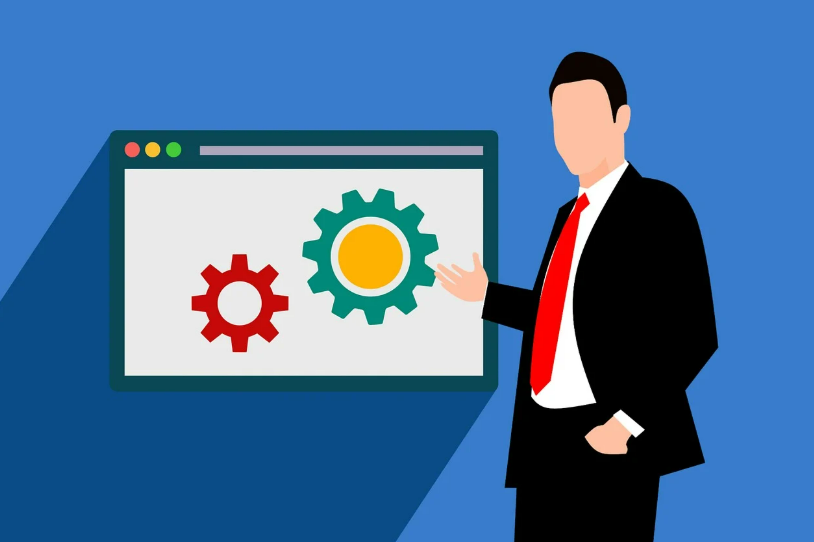Development teams excel at building complex software systems, yet they often struggle with something much simpler: getting the internal support they need to do their jobs effectively. A developer who can architect a microservices platform might wait days for a new laptop or spend hours trying to figure out how to request access to a client’s testing environment.
This productivity paradox affects organizations worldwide. Talented developers waste valuable time navigating fragmented internal processes, submitting requests through multiple systems, and waiting for responses from different departments. The solution lies in Enterprise Service Management, a systematic approach that transforms how development teams interact with internal services.

Understanding the Developer Experience Challenge
Developers have unique service needs that differ significantly from typical office workers. They require specialized hardware configurations, access to multiple software licenses, and frequent changes to their development environments. A single project might need new server access, updated security permissions, and specific software tools, all coordinated across IT, security, and procurement departments.
Traditional service delivery creates numerous obstacles for development teams. Email-based request systems lack visibility and accountability. Different departments use separate processes with varying response times. Manual handoffs between teams introduce delays and errors. Without a centralized system, developers spend too much time managing administrative tasks instead of writing code.
What Enterprise Service Management Brings to Development Organizations
Enterprise Service Management applies proven IT service management principles across all departments that support developers. Instead of maintaining separate request systems for IT, HR, facilities, and other functions, ESM creates a unified service portal where developers can access everything they need.
The platform standardizes workflows across departments, ensuring consistent service levels regardless of which team handles the request. Developers gain self-service capabilities for common needs, reducing wait times and freeing up support staff for more complex issues. Automated routing ensures requests reach the right people quickly, while built-in escalation processes prevent important requests from getting lost.
Transforming IT Equipment and Infrastructure Provisioning
Traditional equipment provisioning often involves multiple emails, approval chains, and manual tracking systems. Developers might wait weeks for specialized hardware or struggle with software installation procedures that vary by department.
ESM platforms automate much of this process through predefined workflows and service catalogs. Developers can select from pre-approved hardware configurations, trigger automatic procurement processes, and track delivery status in real time. Integrating procure to pay tools further streamlines these operations by automating purchasing and payment workflows, ensuring transparency and timely delivery. Software installation becomes self-service through integrated catalogs that include licensing, compatibility checks, and automated deployment.
For development environments, ESM enables template-based provisioning where developers can spin up new environments with standard configurations in minutes rather than days. Integration with asset management systems ensures proper tracking and compliance without manual intervention.
Streamlining Human Resources Processes
Developer onboarding traditionally requires coordination between multiple departments for equipment setup, account creation, project assignment, and training enrollment. Each department might use different systems and timelines, creating confusion and delays.
ESM transforms onboarding into a coordinated workflow that automatically triggers necessary actions across all departments. When HR creates a new employee record, the system can simultaneously initiate equipment orders, account provisioning, security clearance processes, and training assignments. New developers receive everything they need on their first day without anyone manually coordinating between departments.
Ongoing HR support also improves through self-service capabilities. Developers can access benefits information, submit time-off requests with automatic project impact analysis, and track professional development opportunities without waiting for HR response times.
Benefits for Software Development Firms
Many software development firms find that ESM platforms help coordinate internal resources while managing multiple client projects simultaneously. The centralized approach becomes particularly valuable when teams work on concurrent projects with different requirements, security protocols, and resource needs.
ESM standardizes client onboarding processes, ensuring consistent service delivery regardless of project complexity. Resource allocation becomes more transparent, helping managers balance workloads and identify bottlenecks before they impact project timelines. Client communication improves through standardized workflows that track requirements, approvals, and deliverables.
For growing development organizations, ESM provides the scalability needed to maintain service quality as teams expand. New developers can be onboarded efficiently using proven workflows, while new projects can be initiated using template-based processes that ensure nothing gets overlooked.
Measuring Productivity Improvements
The impact of ESM on developer productivity can be measured through several key metrics. Request fulfillment times typically improve dramatically, with many routine requests resolved in hours instead of days. Email volume decreases as developers use self-service options and centralized communication channels.
Developer satisfaction scores usually increase as frustrations with internal processes decrease. Most importantly, developers spend more time on actual development work and less time managing administrative tasks. These improvements translate directly to faster project delivery and higher quality software products.
Organizations often see return on investment within months through reduced administrative overhead, improved project timelines, and enhanced client satisfaction. The initial implementation effort pays for itself through sustained productivity gains across the entire development organization.

Getting Started with ESM Implementation
Successful ESM implementation begins with identifying the most time-consuming and frustrating processes developers currently face. Equipment provisioning, software access, and environment setup typically offer the best starting points because they deliver immediate, visible improvements.
Start with a pilot program involving a small group of developers and one or two departments. This approach allows you to refine workflows and address integration challenges before expanding to the full organization. Developer feedback during the pilot phase helps ensure the system actually improves their experience rather than adding bureaucracy.
Integration with existing development tools is crucial for adoption. The ESM platform should connect with code repositories, project management systems, and communication tools developers already use. Single sign-on capabilities eliminate password frustration while API integrations ensure data flows seamlessly between systems.
Conclusion
Enterprise Service Management transforms development team productivity by eliminating the administrative friction that prevents developers from focusing on their core work. Through centralized service delivery, standardized workflows, and self-service capabilities, ESM enables development organizations to scale efficiently while maintaining high service quality.
The key to success lies in implementation that prioritizes developer experience and integrates seamlessly with existing tools and processes. Organizations that invest in ESM typically see improved productivity, faster project delivery, and higher developer satisfaction within months of implementation.


